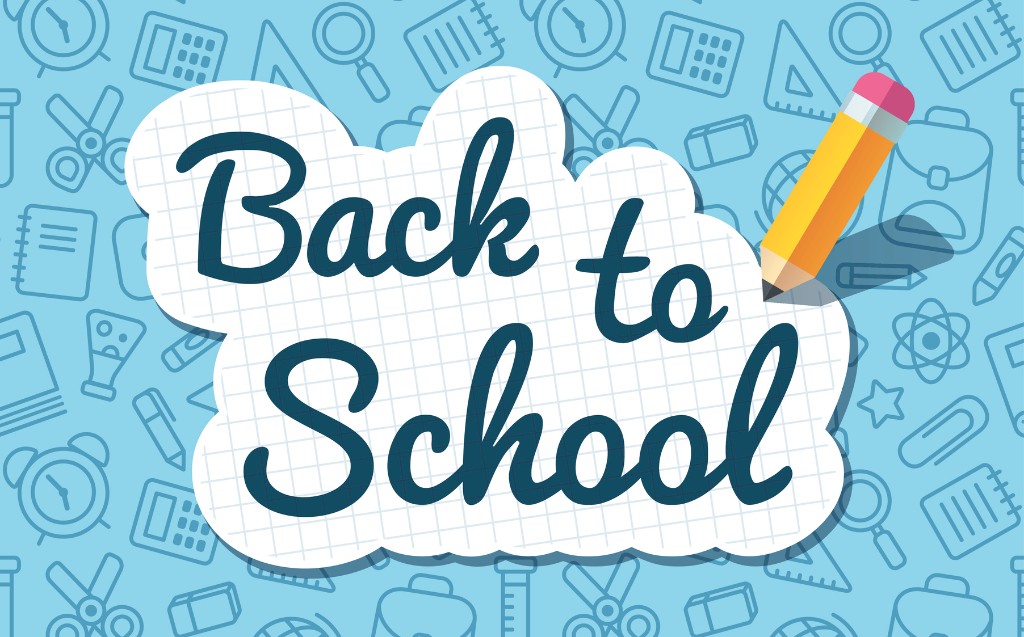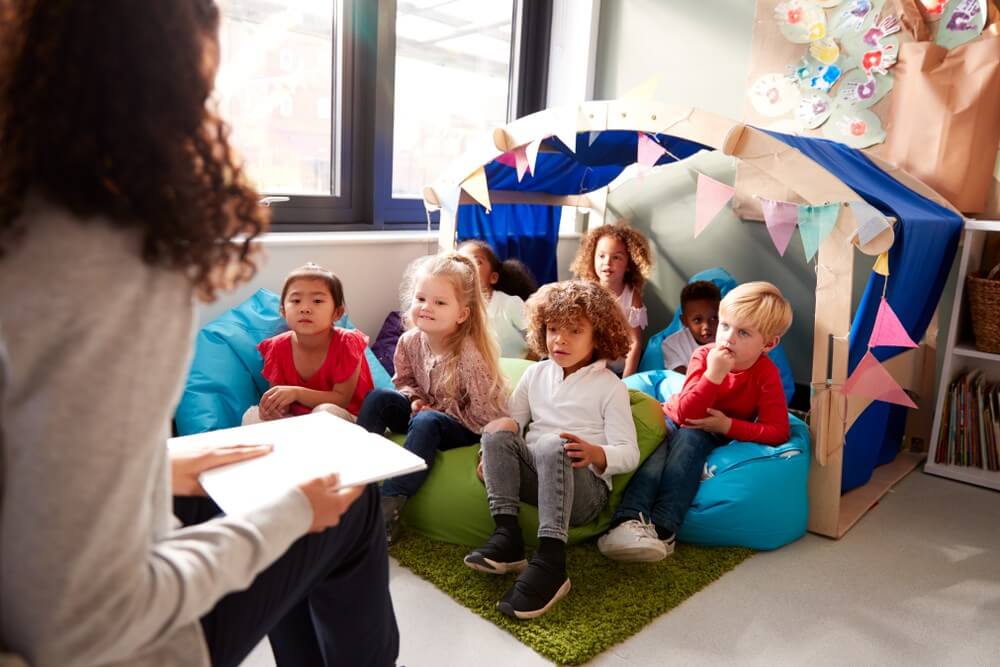
Back to School
Are you prepared for a fresh start and to help your students feel empowered to learn English? Sometimes, even the smallest of changes can make a big difference... Whether you’re preparing for your first ever or your one-hundredth class this September, E-planet is here to help you! Explore the resources below and don’t forget to follow us on Facebook for more #backtoschool tips and ideas....

Recognising Learning Disabilities
Do you know how to recognise learning disorders in the ESL classroom from the first days of school? For example, if some of your students have to be constantly reminded what to do next, you might think they aren’t paying attention, but it could also be a sign that they are having difficulty with what’s called ‘working memory’ — holding, processing and building on new information. Many of us who teach ESL have found ourselves wondering at one time or another whether a certain student might have a learning disability that is impeding his or her progress in English. Read an interesting article on Learning Disorders and let the Child Mind Institute help you recognise some characteristics and signs of learning disorders that can hide in plain sight!...

Creating a Welcoming Classroom
You probably already understand that the environment we create for our English language learners is as important as what we teach and the strategies we use. But have you given thought to a classroom design that can be more conducive to 21st-century learning, where collaboration, communication and project-based activities are becoming the norm? Do you know what colours can help students feel calm? Are you aware of the ways to make younger and older learners follow health and safety protocols? If not, it’s time to read our blog post Back to School to find out how you can help your students see the new school year in a positive light and to feel more motivated to engaged in the learning process!...

Engaging English Learners
At the beginning of a new school year, it’s easy for English learners to be daunted by the whole year in front of them and feel overwhelmed and unmotivated. Holiday breaks are much needed, but it can be hard to return to work and study mode afterwards! Read our blog post How to Engage English Learners – after a long break to learn how the post-break period can affect your students and pick up some tips on how to motivate them after a long time out of the classroom!...

TV, Netflix & English Language Learning
How can you create fun and meaningful learning opportunities with the help of television programmes and streaming services? What if your young and older English learners could watch them without feeling guilty? Yes, it’s possible to turn TVs and Netflix into a sofa-based language lab! Read on to find out how you can motivate your students to talk about their homework in class and keep watching episodes, films, and documentaries in English outside the class.What more could an English teacher ask for? Favourite Scenes Ask your students to watch an episode or a film of their choosing at home, and to bring a drawing or other image of their favourite scene to the next class. They have to present the scene to the class and explain why it is so interesting. You can adapt this activity for all levels. For example, you could ask a beginner to describe what they see in the picture, an intermediate learner to say why the scene is important, and an advanced learner to talk about the social messages that this scene conveys. Tip: Ask your students to use English subtitles to improve their spelling and reading skills. For advanced levels, turning off the subtitles is recommended. Explain that it’s not necessary to understand every single word, and that already knowing the plot can help tremendously. Diving into English Culture & History A plethora of shows is ready to let your students familiarise themselves with the culture and history of English-speaking countries! For example, ‘The Crown’ is a popular show that follows the captivating story of the reign of Queen Elizabeth II, which began in the 1940s. This could also be a perfect choice for learners interested in developing a British accent, gaining exposure to a wide range of vocabulary, or learning formal English. Tip: Explain to your students that some characters in all series and films may come from different countries and have accents that can be hard to understand. But though almost all English learners would prefer listening to standard English since it’s easier, it’s good to know that English is spoken as an international language by many people around the globe, and understanding different accents is extremely beneficial. Documentaries & Resources A good selection of free documentaries and educational resources, which can be used by both you and your students, can be found here: Netflix Documentaries & Resources for all....

Class Size Matters!
(A teacher's guide to large classes)
The more, the merrier? Well, not always! Teaching large classes and many students can be a really intimidating and daunting experience. But once you get the hang of it, it not only can be easy, but also fun. Let’s see how you can motivate students and keep them enthusiastic about learning English. Here are some useful tips to get off on the right foot! ...Plans and RoutinesDead time while you are shuffling through books trying to choose another activity is the perfect time for your students to start misbehaving. That’s why planning and routines are two of the most important things to have in terms of maintaining order in the classroom. < It also helps to have a method for getting students’ attention if the class starts to get noisy. When there are moments that your students seem unfocused, start… talking! E-planet Educational Services conversation course, Live Chat, mixes discussion and tasked-based activities so that students can improve their conversation skills, and it is ideal for any teacher who wants to include more conversation in the classroom and keep students on their toes!Active LearningWith larger class numbers there comes an even more diverse range of learning styles. That’s why using a variety of teaching techniques and active learning strategies will help you to engage all learning styles and therefore all students.Divide and Conquer Another key point to remember is that dividing a large class into teams and having a fun, competitive environment can motivate students. By awarding points to the quietest team or best behavior, you can keep their behavior in check, too. Participation ChancesIn a large classroom, it’s easy for quieter and more introverted students to fade into the background while the more outgoing ones answer questions and participate. Playing games where everyone has to take part really helps! Technology AidIncorporating technology can make teaching large classrooms more manageable. Fortunately, in the age of the Internet, that’s not hard! Embrace the different ways technology can contribute to the learning process, and use the tech you need to increase student engagement and spark discussion. You'll see the interest level in your classroom increase by leaps and bounds!For example, since motivation is one of the most important factors in foreign language acquisition, you can use the power of 3D animated cartoons to make learning fun.Discipline and Rules How do you get students to pay attention and not throw that eraser at their classmate’s head? You don’t have to be a mean teacher… but you also can’t let students get away with little things like constantly talking or starting fights. Make it clear from the first day of class what you won’t tolerate. Smart SeatingSeating plans can make or break even the best of classes! Take a proactive approach and think about which students are most likely to start chatting, misbehaving or fighting during class. Positive RapportA great rapport is important for all class sizes, but it is especially important in large classes because you will not be able to develop a one-on-one relationship with all students. Appear approachable, share interestinginformation about yourself and show your students that you want them to feel like they know you on a more personal level. What is the biggest class you have ever had to teach? Tell us in the comments below. And if you enjoyed this post, please give it a quick share on your favourite social media! If you liked this, you might also enjoy the article 5+1 ways to become a better English teacher.And if you are interested in more, you should follow our Facebook page where we share more about fun and creative ways to teach English!...



